Vélo Visits: Top Destinations on the 2016 Tour de France Route
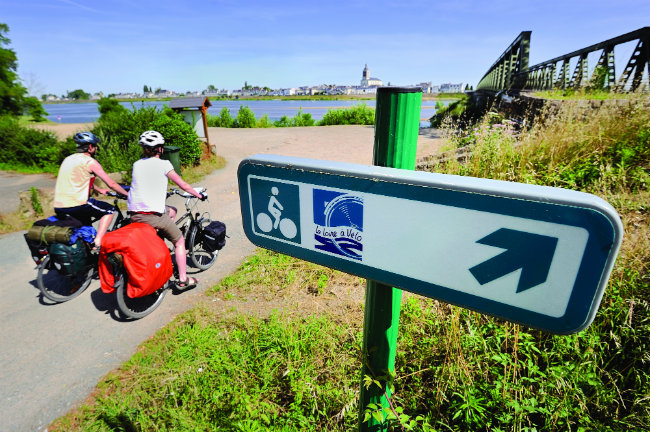
Angers: France’s greenest city (2016 Tour de France, Stage 3)
With direct flights from London and a journey time of just over an hour, Angers is now easier than ever to get to. Billed as the number one French city for quality of life, its promise of green open spaces, fine dining, light Loire Valley wines and quintessentially French character make this a destination that’s hard to ignore.
Its rich cultural heritage boasts a mighty 13th-century fortress, Château d’Angers, the 12th-century Gothic Cathédrale Saint-Maurice, and a Quartier des Beaux-Arts full of galleries and museums. For those wanting to explore, the Angers City Pass card provides free admission to some 20 sites and attractions, including guided city tours with the tourist train. It costs €14 for a 24-hour pass, €23 for 48 hours, and €29 for 72 hours, and like most city passes is well worth the saving in money and hassle.
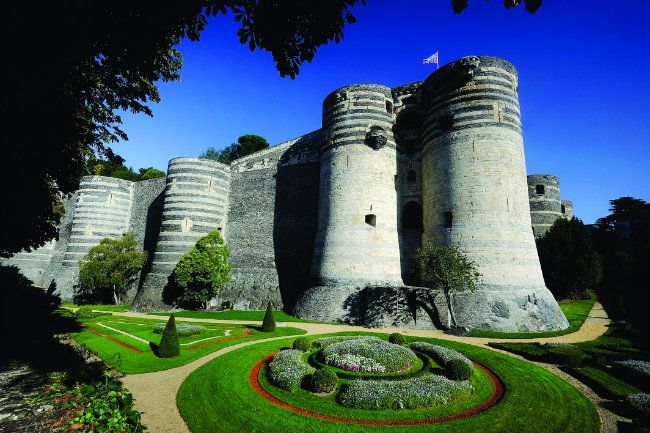
Chateau Angers © Jean-Sébastien Evrard
As France’s greenest city, Angers also boasts 1,500 acres of parks, gardens and rivers, providing a welcome break from pounding the cobbled streets. If you’re happy to venture beyond the city boundaries, it’s surrounded by vineyards and bicycle trails, while a ten-minute drive (25-minute tram journey) will get you to the Terra Botanica, which opened in 2010 and features sprawling gardens and more than 40 rides and attractions.
Angers prides itself on the quality of its food – made with local produce of course – and has numerous guinguettes dotted along the rivers Mayenne, Maine and Loire for lunch outdoors in the sun. And if you’re after fine dining, you’re spoiled for choice: from the Michelin-starred Château de Noirieux to the VF (Version Française), which does American fast food the French way, there are restaurants and bistros to suit all tastes.
Indeed, with its numerous stately homes, boutique shopping, vibrant night life, a year-round programme of festivals and even a new water park, Angers truly has something for every visitor. For more information, visit: www.angersloiretourisme.com
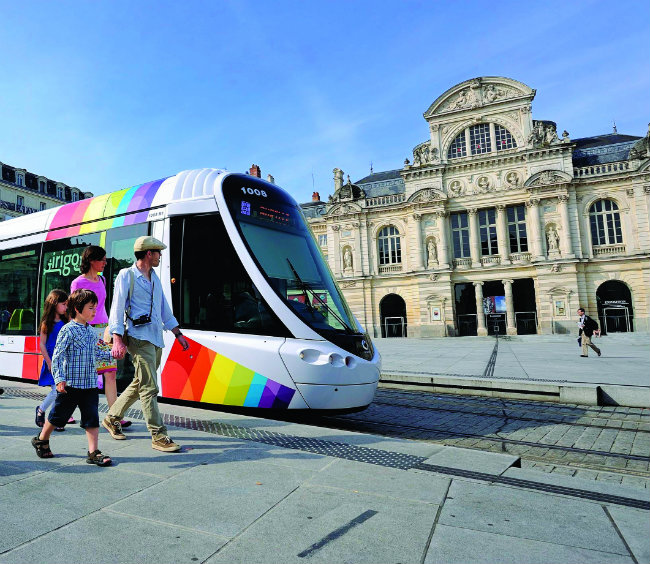
A family exploring the city of Angers © JEAN-SEBASTIEN EVRARD
Angers Must-Sees and Events
Château d’Angers: Angers’ castle features three-metre-thick walls and 17 towers. Inside you’ll find the Apocalypse tapestry, the oldest surviving example in France. The large moat, once a defensive feature, now hosts a floral display.
Tempo Rives: July-Aug, an outdoor stage hosts ten free concerts on the banks of the river Maine.
Street theatre: 9-11 Sept, Les Accroche-Coeurs Festival of Street Theatre brings cinema, music, dance and art.
Soleils d’hiver: Angers marks Christmas with a market, lights, a carousel and more!
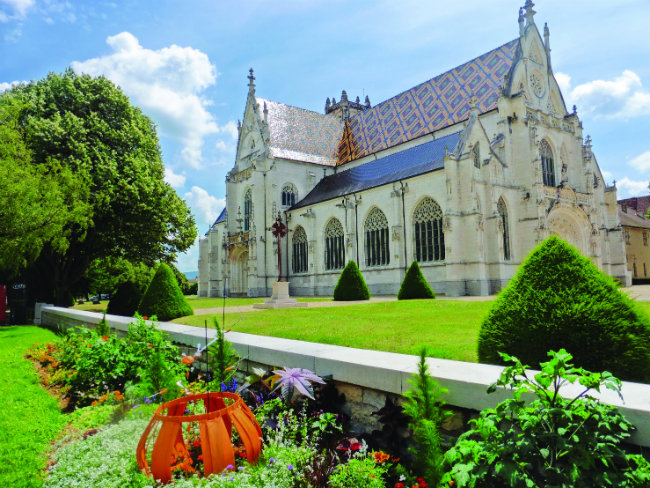
Royal Monastery of Brou. Photo credit: AP/ Bourg-en-Bresse Office de tourisme
Bourg-en-Bresse: Timeless (2016 Tour de France, Stage 15)
Nestling at the base of the Jura mountains, this commune in eastern France lies 70 km from Lyon and 100 km from Geneva, with rail links to Paris and Strasbourg. Pronounced “Bourk-on-Bress” the city, which can trace its roots all the way back to the Celts, is a pleasing jumble of architecture, with tiered medieval houses, Gothic churches and Renaissance cathedrals rubbing shoulders with Regency mansions, modern, glassy hotels and contemporary sculptures.
Highlights include the Royal Monastery of Brou, a beautiful 16th-century church with several notable tombs and a museum of arts, plus the hospital’s apothecary shop. Consisting of a laboratory, storeroom and dispensary – all still resplendent with their original equipment and Louis XV/Louis XVI woodwork – the apothecary is a real step back in time. Elsewhere, Romanesque churches, watermills, fortifications and restored farms punctuate a series of prescribed tourist circuits.
Local lakes provide a number of water sports for thrill-seekers, while there are parks and walks galore if you simply prefer to stroll and soak up the sun and surroundings of this quaint and historically diverse city. For more information, visit: www.bourgenbressetourisme.fr/en
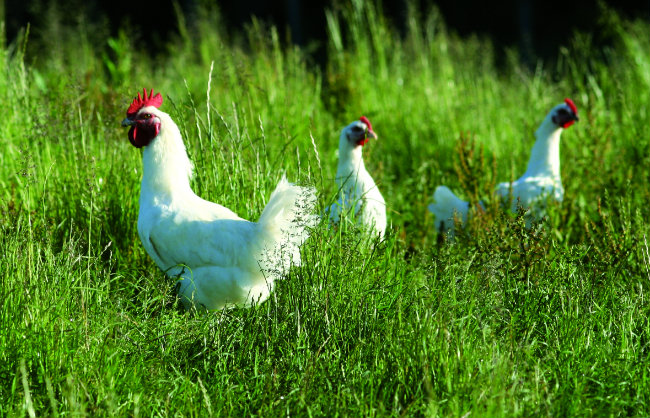
poulet de Bresse. Photo credit: CIVB
The Fair and Fowl of Bresse
Poulet de Bresse: Bresse is famous for its appellation d’origine contrôlée poultry, regarded as the best chickens in the world.
Market day: Don’t miss the Bourg-en-Bresse market on the show ground, every Wednesday and Saturday morning.
Circus time: The Br’Ain de Cirque festival takes place every year around May.
Seeing the light: From June 17-Sept 17, the Church of Brou acts as the screen in the spectacular Couleurs d’Amour light show.
Reverting to type: A new museum boasts some 300 typewriters and calculators dating back to 1840.
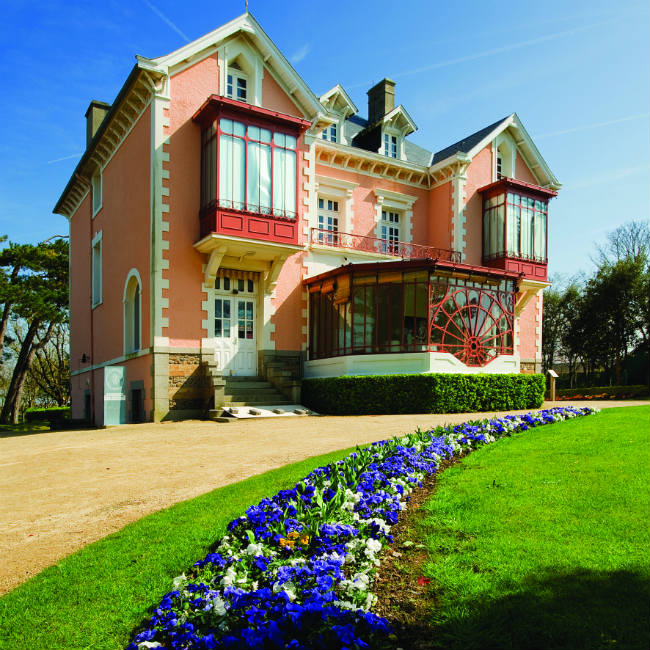
Christian Lacroix Museum. Credit: Photographer Marc Lerouge
Granville: Cut Your Cloth (2016 Tour de France, Stage 3)
The west coast of Lower Normandy provides a perfect sunny seaside location, at slightly lower temperatures than France’s often stifling Mediterranean hotspots – ideal both for those crossing the Channel or looking for a short break out of their Paris holiday base.
Granville is a pretty port in Mont Saint-Michel Bay and lies at the end of the Côte des Havres on a dramatic headland known locally as ‘le Roc’. The 19th century saw the town become a popular holiday resort, monikered ‘The Monaco of the North’ – thanks to the promontory – and it’s long been famed for its quality shellfish, and (historically at least) for cod-fishing.
In many ways it’s a perfectly normal fishing settlement, but Granville also has a claim to fame as the birthplace of legendary designer Christian Dior, whose home is now a museum which covers the great innovator’s life from his birth in 1905 to his death 52 years later, leaving behind a legacy of elegance. Those interested in exploring Dior’s life should plan their visit via the website at www.musee-dior-granville.com. And then oysters for supper! For more information, visit www.ville-granville.fr
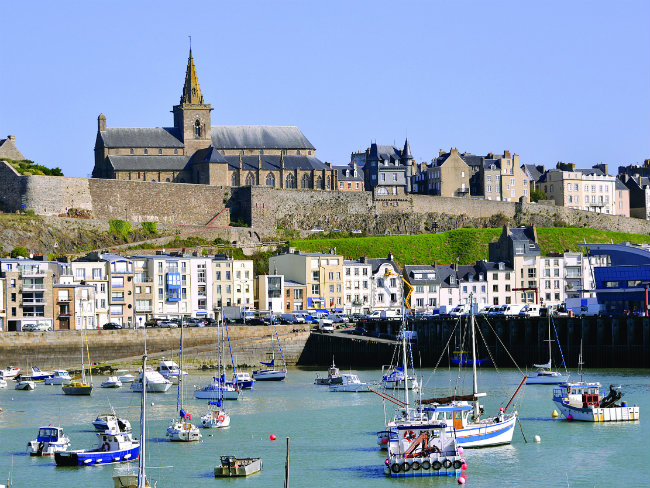
The pretty port of Granville. Photo: Fotolia
Sea, Scrap and Street Theatre
Notre-Dame church: Dating back to the 12th century, the church has some unusual stained glass, based on Cubist and Fauvist principles.
Roc des Harmonies: This small aquarium also features a butterfly garden and collection of shells and minerals.
Sorties de Bain: From 7-10 July, Granville hosts a programme of street theatre with comedy, circus and dance acts, taking place all over the town.
Welders’ Night: On the first Saturday of August, artists create works of art from scrap metal, with pieces auctioned on Sunday.
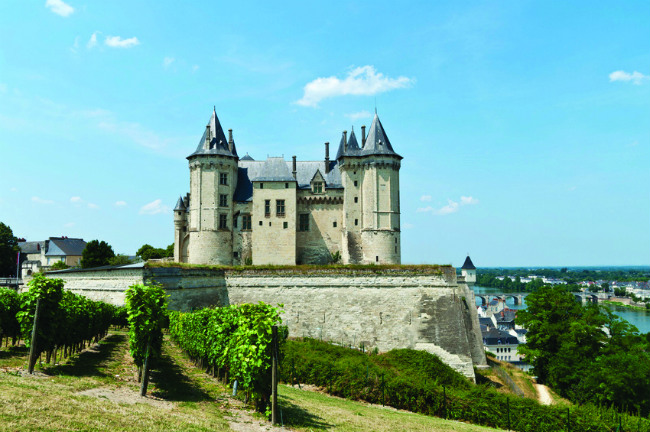
Château de Saumur. Photo: Fotolia
Saumur: Military Honours (2016 Tour de France, Stage 4)
Situated between the Loire and Thouet rivers, this picturesque city resides in the Maine-et-Loire department of western France. Its skyline is dominated by the towering spires of the Château de Saumur, which dates back to the 10th century when it was first built as a stronghold against Norman attacks across the Loire.
Saumur is famous for its military riding academy École Nationale d’Équitation, and its trainers, the Cadre Noir. Originally set up to train French cavalry officers it’s now an elite riding school, but holds daily visits and public displays in its main arena between April and October. The school also trains officers of the armoured cavalry and, accordingly, there’s a tank museum located on the other side of town: the Musée des Blindés hosts the world’s largest collection of armoured fighting vehicles with more than 880 exhibits. The annual Carrousel de Saumur takes place in July, with equestrian and motorised displays.
Boasting fine limestone architecture, bustling medieval backstreets, picture-postcard views over the Loire and a surrounding landscape full of vineyards, Saumur represents a fine holiday destination. For more information, visit www.ot-saumur.fr
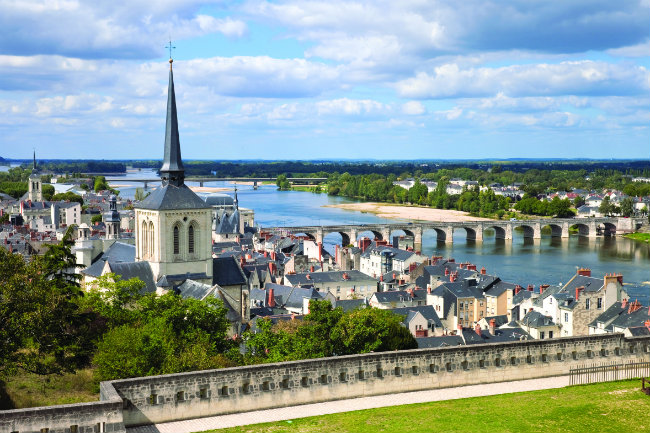
The newly renovated Church of Saint-Pierre de Saumur overlooks the Loire. Photo: Fotolia
Castles and Abbeys
Château de Saumur: The restored castle now hosts the Musée de la Figurine-Jouet’s collection of toys and military figurines.
Mushroom Museum: The subterranean Musée du Champignon holds 500 species!
Pierre et Lumière: See sculptures hewn from cave walls.
Abbaye de Fontevraud: This sprawling 12th-century abbey lies just 16 km from Saumur and is the final resting place of the Plantagenets, Richard the Lionheart, King Henry II and his wife Eleanor of Aquitaine.
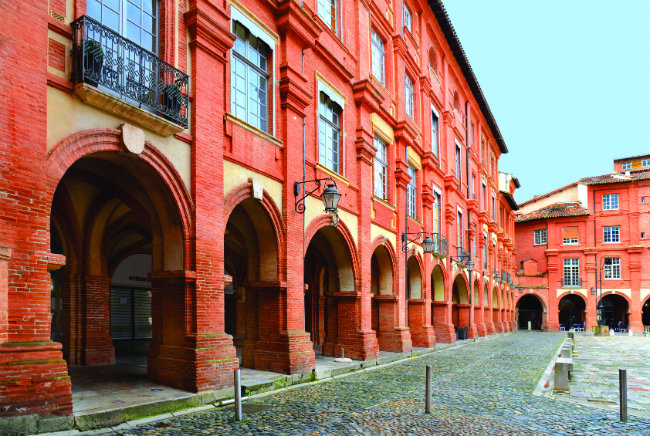
Montauban. Photo: Fotolia
Montauban: Bastide Beauty (2016 Tour de France, Stage 6)
Located about 50 km north of Toulouse on a bend in the River Tarn, in the Tarn-et-Garonne department, Montauban is rightly proud of its status as the second-oldest bastide in southern France. The medieval grid plan of bastides gives the town’s main square – Place Nationale – symmetrical elegance and arcaded shop frontages that conceal beautiful large courtyards and historic stair towers. Wandering around the red-brick square, it’s easy to imagine it being the town’s beating commercial heart back in the day.
The town’s only two medieval vestiges please the eye immensely: the epic old bridge (begun in 1303) and St Jacques church (from the 14th and 15th centuries and dedicated to Saint James of Compostela).
Don’t miss the cathedral of Notre-Dame-de-l’Assomption, a National Monument of France, or the former Jesuit college that now houses the tourist office. For art lovers, the Musée Ingres celebrates the artist’s life and works in the former Episcopal Palace – including his entire collection of 4,500 drawings. Montauban has been part of the national network of Cities and Regions of Art and History since 1998. For more information, visit en.montauban-tourisme.com
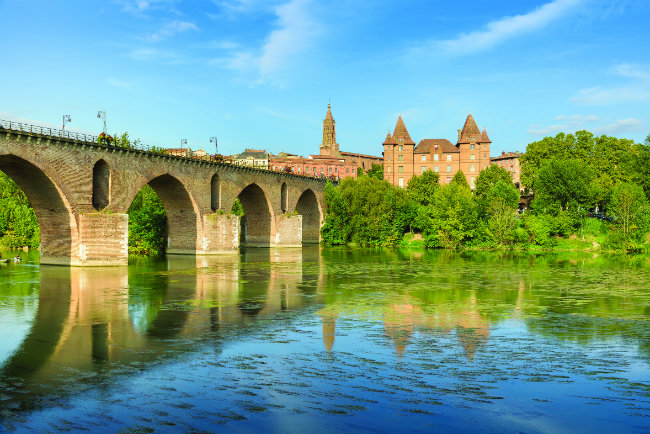
Musée Ingres (right of the bridge) holds many works donated by the painter. Photo: Fotolia
Arts and Crafts
Place Nationale: Site of daily markets and brocante fairs, its high brick façades serve as a fine backdrop for summer spectacles.
Guided tours: Take an informative stroll around the city. [email protected]
Olympe de Gouges: The theatre has a year-round schedule of music and dance.
Festival season: Throughout July, Montauban holds a series of events across the city at five different venues. This year, the acts include everything from ballet to contemporary dance to a Queen tribute act.
From France Today magazine
Share to: Facebook Twitter LinkedIn Email
Leave a reply
Your email address will not be published. Required fields are marked *



